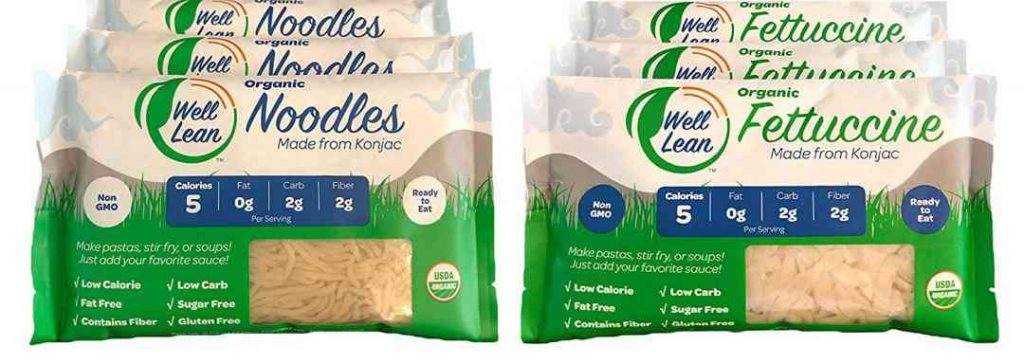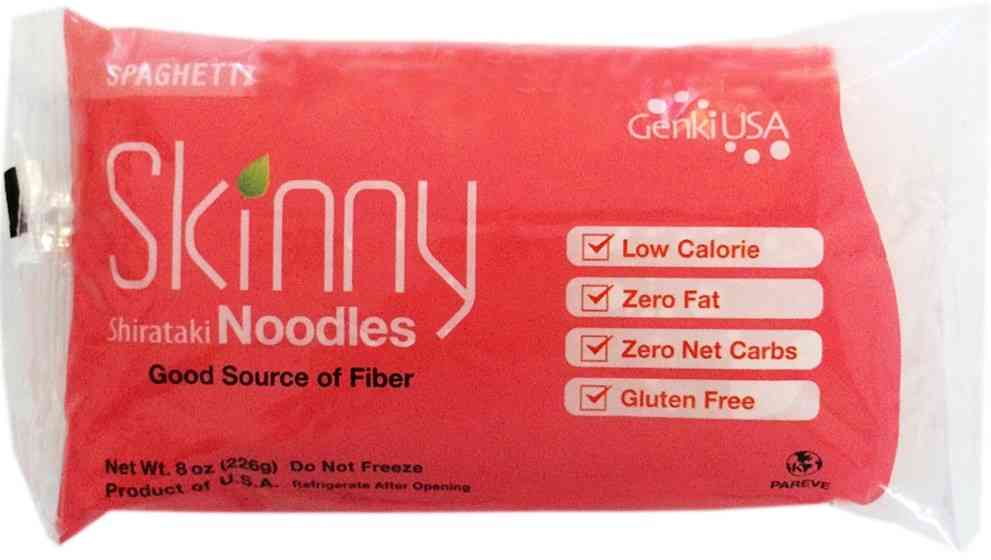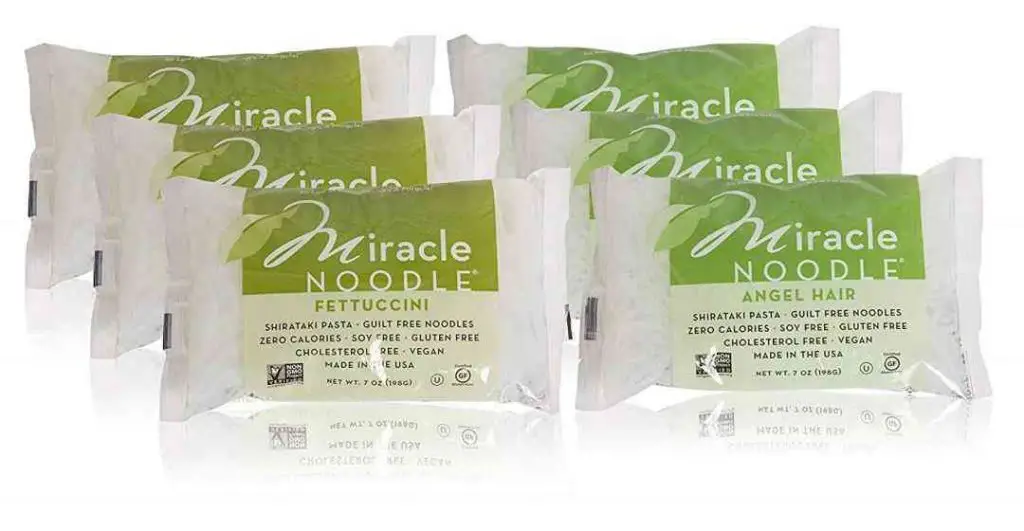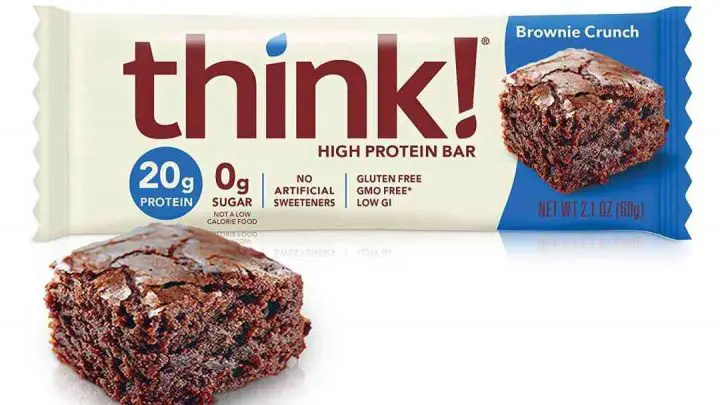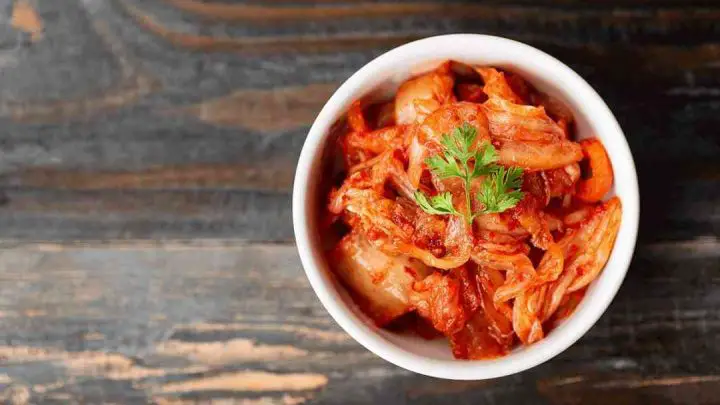Shirataki noodles are a gift for all keto dieters who love their pasta. It’s a no-net carb, no-calorie noodle made of mostly water and glucomannan fiber.
It’s a perfect option for someone looking to cut calories and carbs while taking advantage of its added health benefits. Just imagine being able to eat your favorite pasta dish without the guilt!
5 Reasons Why Shirataki Noodles Are Keto-Friendly

- No Calories, No Net Carbs, No Sugar
Since this miracle food contains almost no calories or carbs at all, it’s the perfect option when it comes to slashing your caloric intake and losing weight without starving yourself.
Take note that few shirataki noodle brands contain around 10 to 15 calories per serving. However, the total net carb is more important than total calories when we’re talking about the keto diet.
You can get the net carbs by subtracting the total carbohydrates by its dietary fiber. You’ll be amazed that most shirataki noodle brands contain no net carbs at all! - It’s Mostly Made Of Water
“Shirataki” means “white waterfall” in Japanese which perfectly describes the noodles’ translucent, watery texture.
Shirataki noodles contain a lot of water – they are about 97% water and 3% glucomannan fiber. This also explains why they’re very low in calories and carbs.
You also don’t need to worry about the other ingredient, glucomannan, since it is a naturally-occurring ingredient from the konjac plant.
Most shirataki noodle brands are non-GMO, calorie-free, sugar-free, gluten-free, and vegan-friendly. - Glucomannan Helps Curb Your Appetite
Shirataki noodles are made by mixing water and glucomannan flour, which helps the noodles hold their shape.
Glucomannan is a water-soluble dietary fiber extracted from elephant yam roots, also known as konjac. It can absorb water up to 50 times its original weight. This explains the reason behind Shirataki noodles’ extremely high water proportion.
Glucomannan is also known to reduce levels of ghrelin, a hormone that stimulates appetite, promotes fat storage, and increases food intake.
In one recent study, obese people who consumed glucomannan every day for 8 weeks lost 2.5 kg (5.5 lbs) without changing their diet and exercise habits.
Just imagine the effects of combining glucomannan with ketosis! - Glucomannan Helps Reduce Blood Sugar and Insulin Levels
Glucomannan is a viscous fiber that can delay the emptying of the stomach, which also slows down the rise in sugar and insulin levels as the nutrients are absorbed into the bloodstream.
In one study, a group of individuals with type 2 diabetes who took a dose of glucomannan before consuming sugar had notably lower blood sugar levels 2 hours later, in contrast to their blood sugar after a placebo.
Blood sugar and insulin levels are both important to be maintained on a keto diet to ensure that your main source of energy is fats and not glucose. - Shirataki Noodles Are The Perfect Keto Substitute for Pasta
Can you just imagine a life without pasta and noodles? We owe it to the Japanese for discovering this miracle noodle!
Most Shirataki Noodle brands nowadays are available in different varieties – Fettucini, Angel Hair, Spaghetti, Capellini, etc. This makes it a lot easier for us to buy the right kind and use it as a substitute in our favorite pasta dishes.
Best Shirataki Noodle Brands For Keto
Here are the best Shirataki noodle brands that we have tried so far. All brands listed here are low carb, no sugar, non-GMO, gluten-free, and keto-friendly. We have also classified them based on 3 categories – Best for Keto, Best Value, and No Calorie Option.
Best For Keto: Well Lean Shirataki Noodles
- Only 5 calories, no net carbs, no sugar
- Best tasting Shirataki Noodles that we’ve tried. Unlike other brands, it does not smell like fish and its texture is not rubbery.
- USDA Certified Organic
- Gluten-Free
Calories: 5 | Fat: 0 | Net Carbs: 0 | Protein: 0
Best Value: Skinny Noodles Shirataki Noodles
- Only 10 calories, no net carbs, no sugar
- Least expensive brand in the list
- Gluten-Free
- Smells like fish when you open the package
Calories: 10 | Fat: 0 | Net Carbs: 0 | Protein: 0
No Calorie Option: Miracle Noodle Shirataki Noodles
- No calories, no net carbs, no sugar
- Gluten-Free
- Most reviewed brand on Amazon
- Smells like fish when you open the package
- The texture of the noodles is rubbery
Calories: 0 | Fat: 0 | Net Carbs: 0 | Protein: 0
How To Make Keto Sausage Pasta w/ Shirataki Noodles
Ingredients
- 8 oz Shirataki Noodles
- 1 sugar-free beef sausage
- ¼ cup Pecorino Romano Cheese, grated
- 2 tbsp grass-fed butter
- ¼ cup organic heavy cream
- 1 tsp dried parsley
- garlic powder, salt, and pepper to taste
Directions
- Dry off the shirataki noodles thoroughly. Filter out all of the water, then pat dry using a paper towel. Cook the noodles for 5 to 10 minutes to completely dry them. This will remove the fishy odor from the noodles.
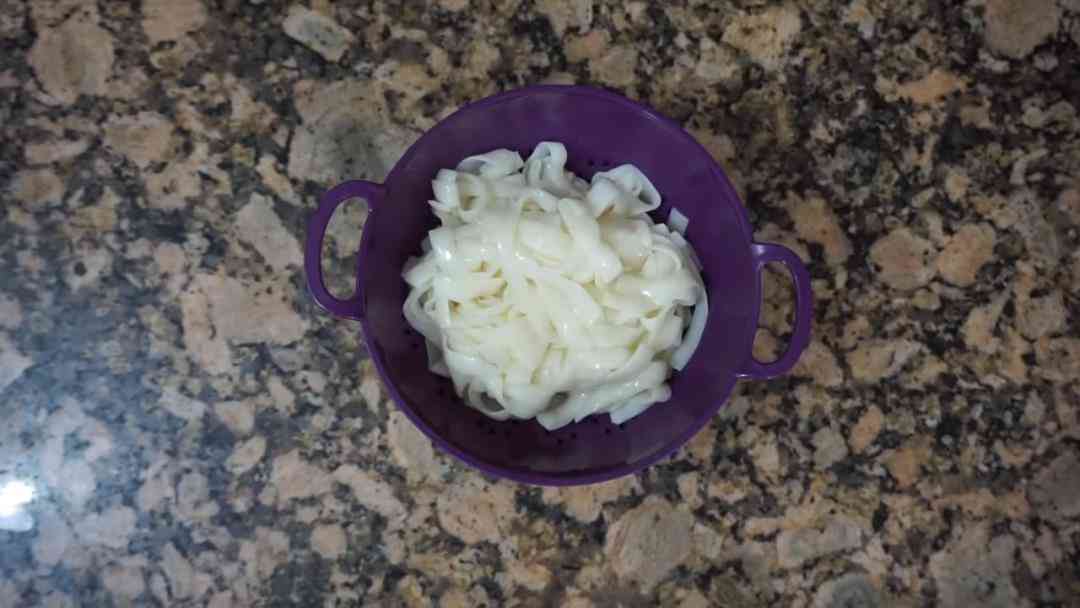
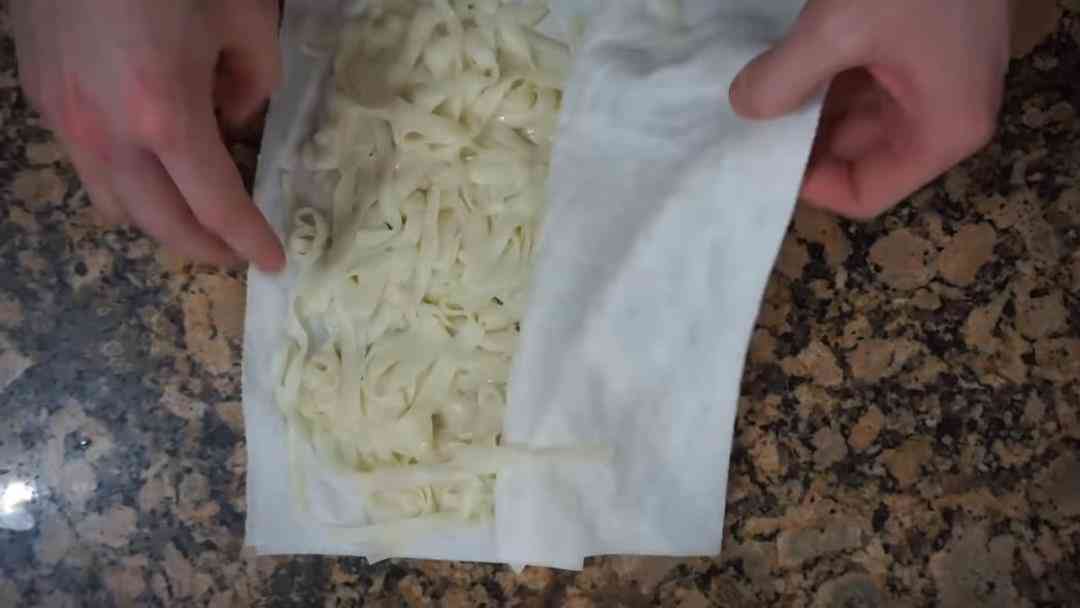
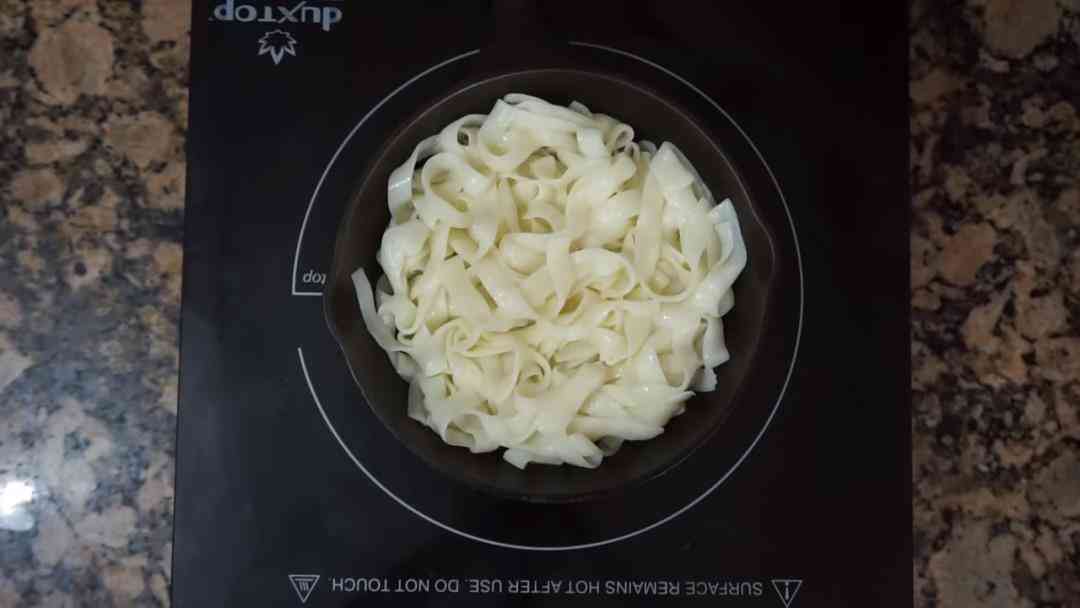
- Cook the sausage on medium heat until cooked. Set it as aside.

- In the same pan, add butter and cream. Scrape the bottom of the pan to get all the sausage flavor.
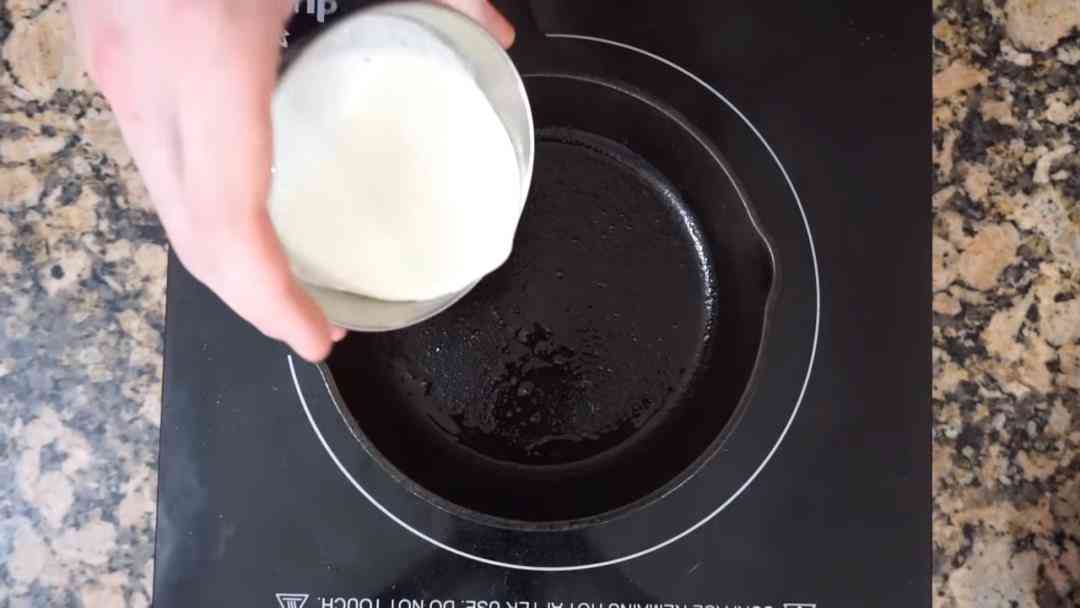
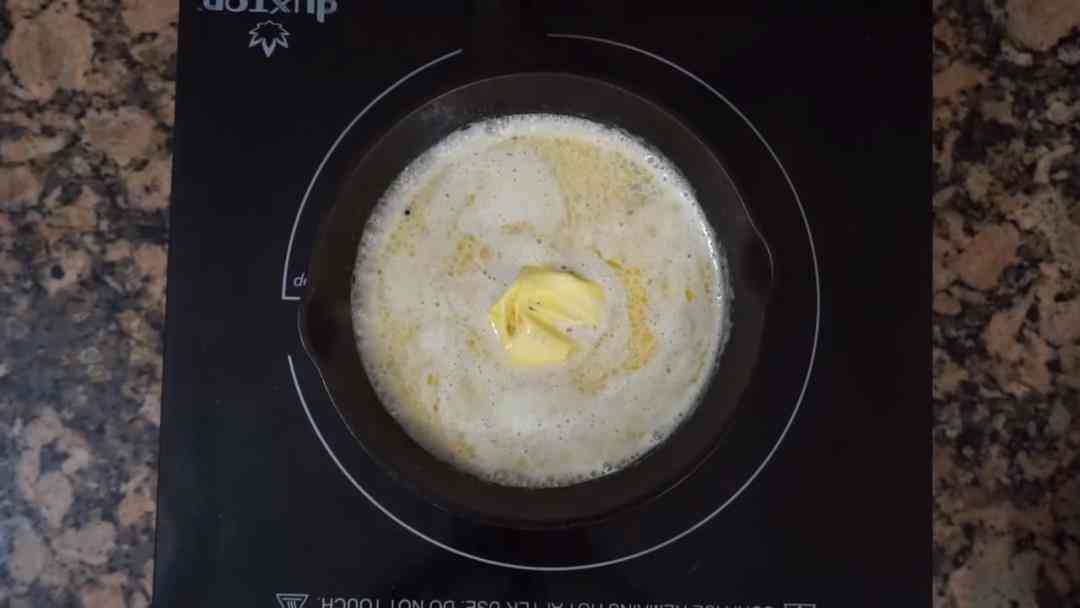
- Add parsley, cheese, salt, and pepper. Mix thoroughly until cheese is fully melted.
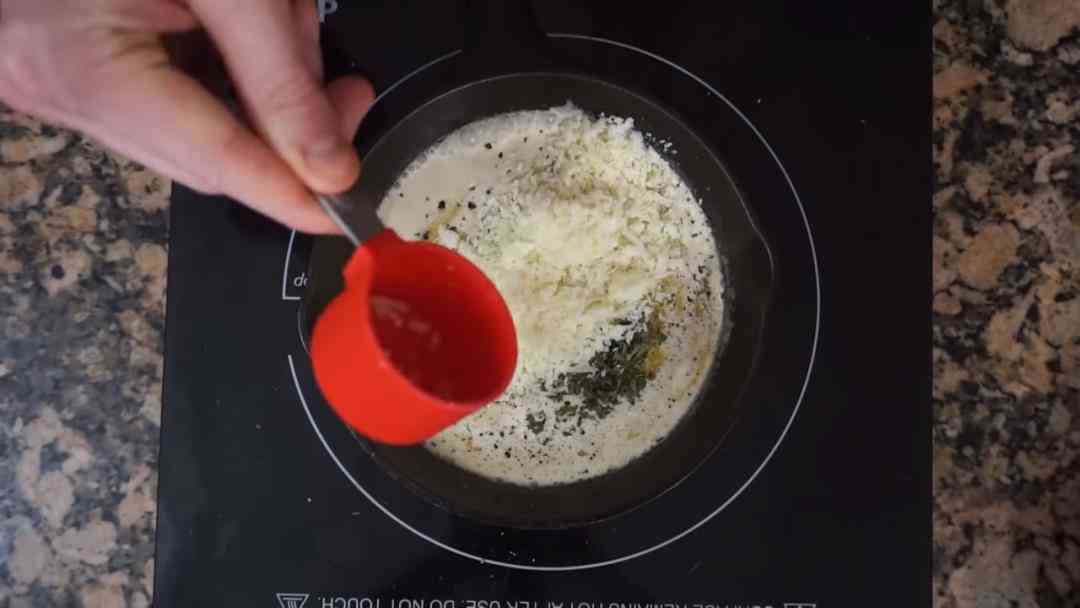
- Add noodles into the sauce. Toss to coat the noodles.
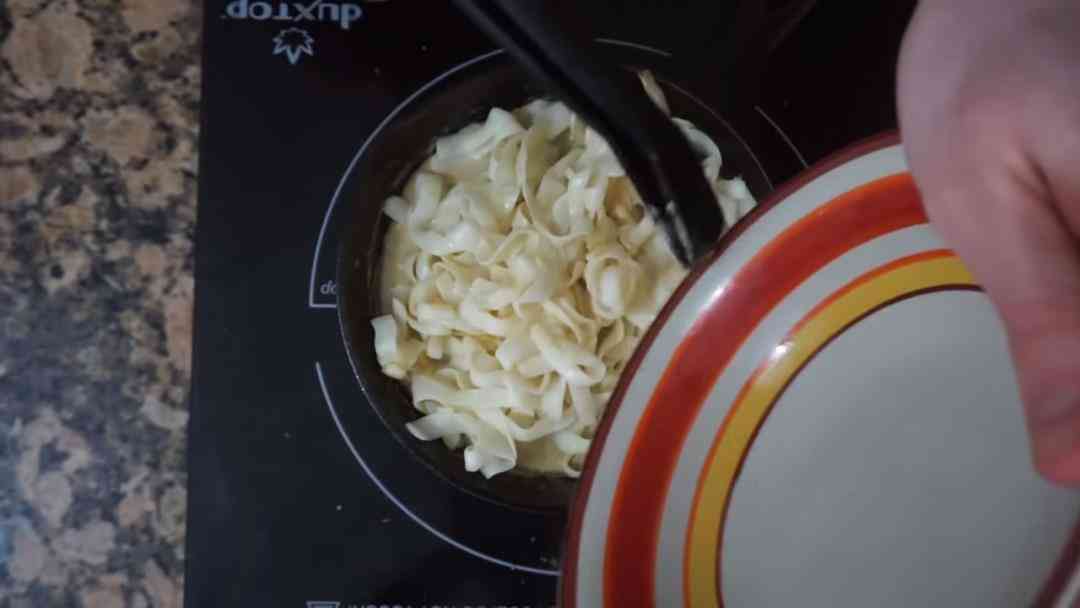
- Slice sausage then place it on top.
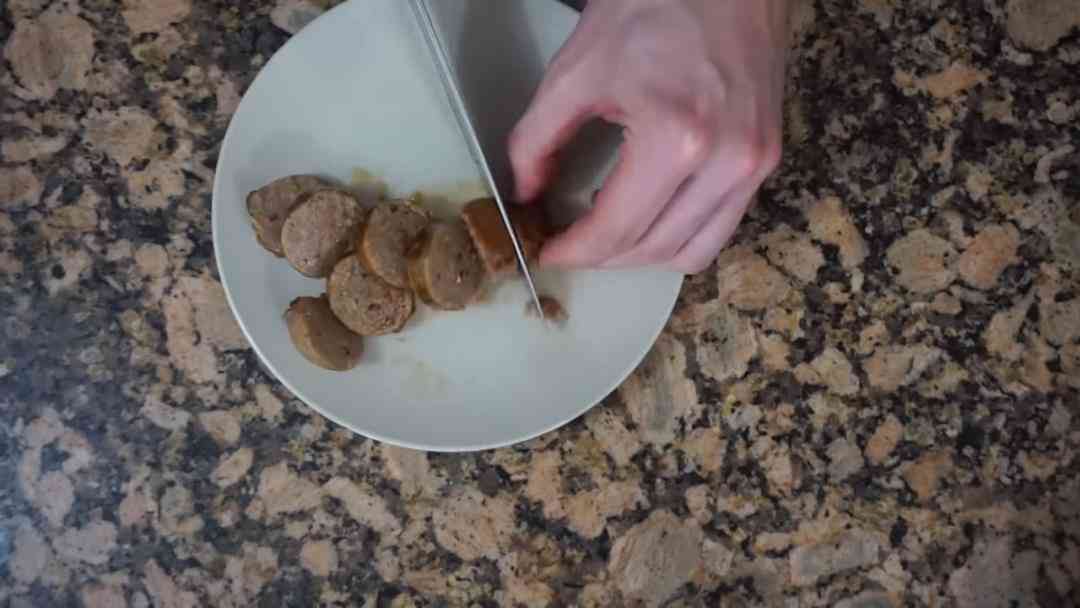
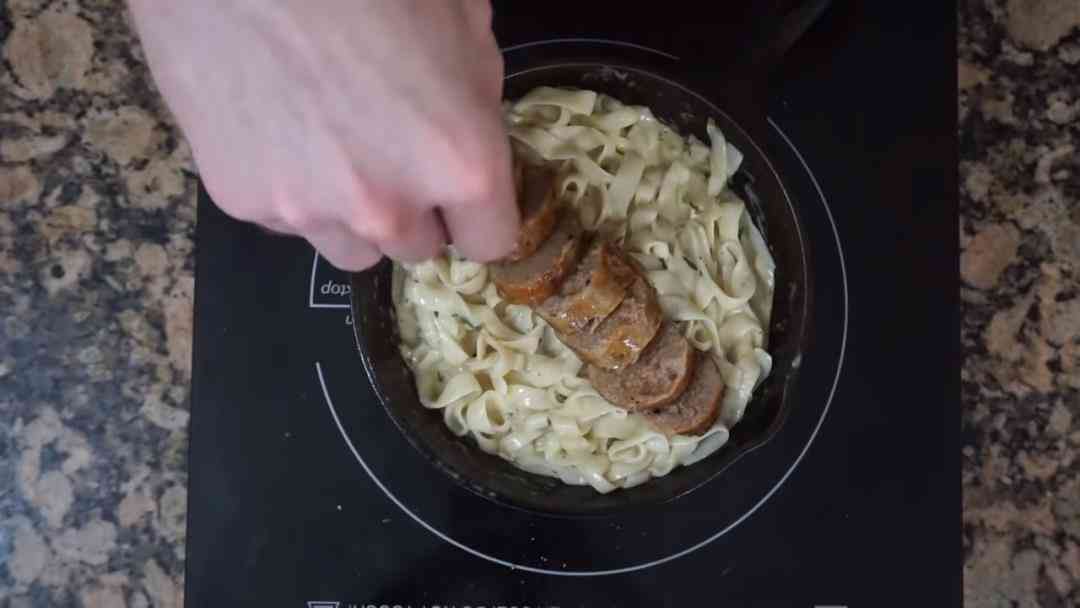
- Add grated cheese and parsley on top.

- Serve and enjoy.
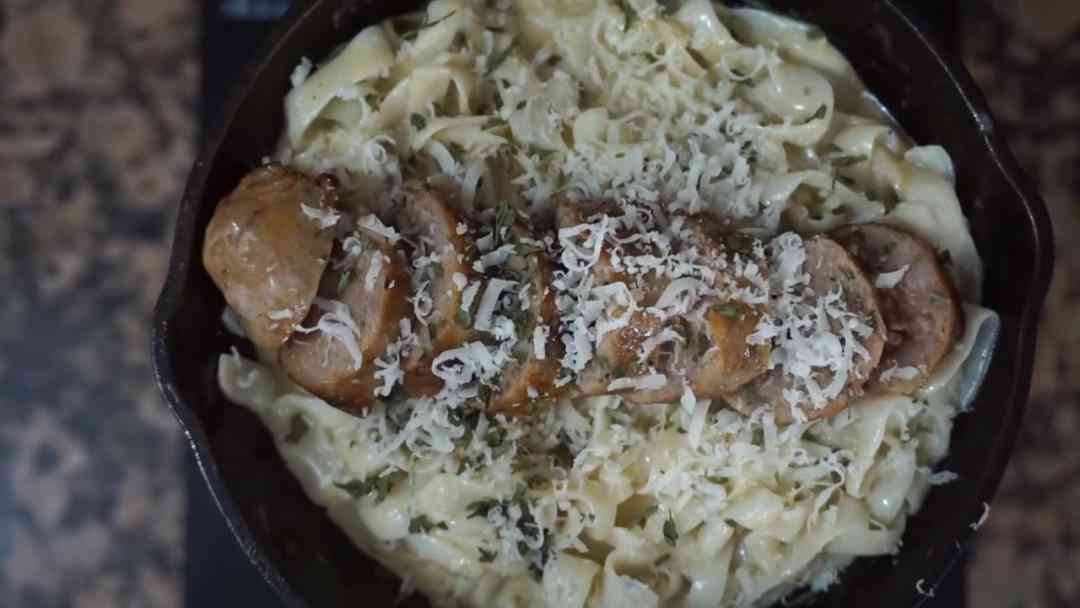
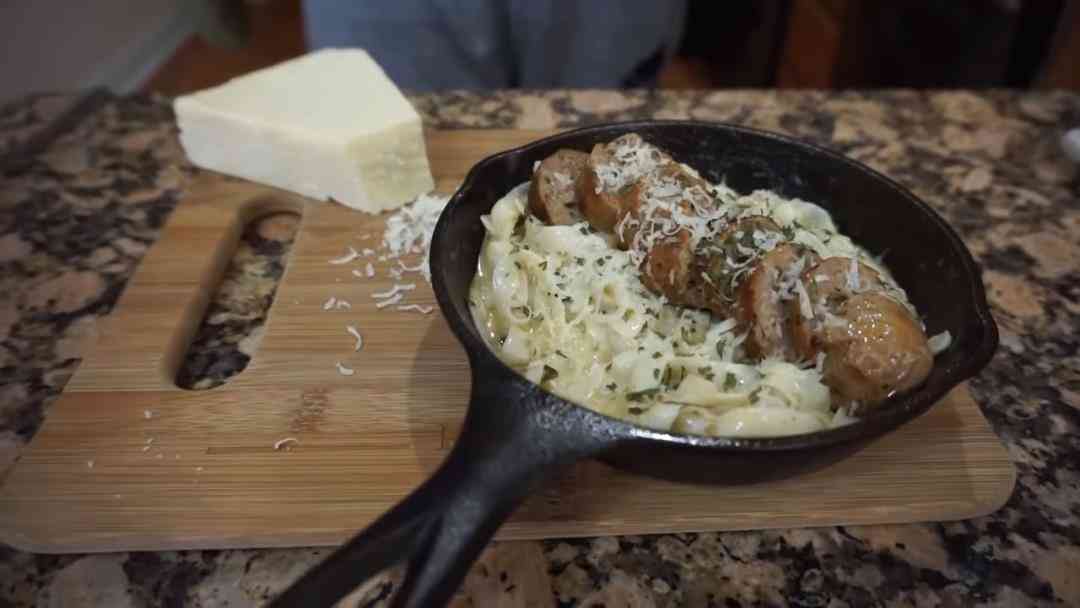
Other Delicious Keto Recipes w/ Shirataki Noodles
Here are other delicious keto recipes with shirataki noodles that you can try. Click any of the pictures below for the recipe.
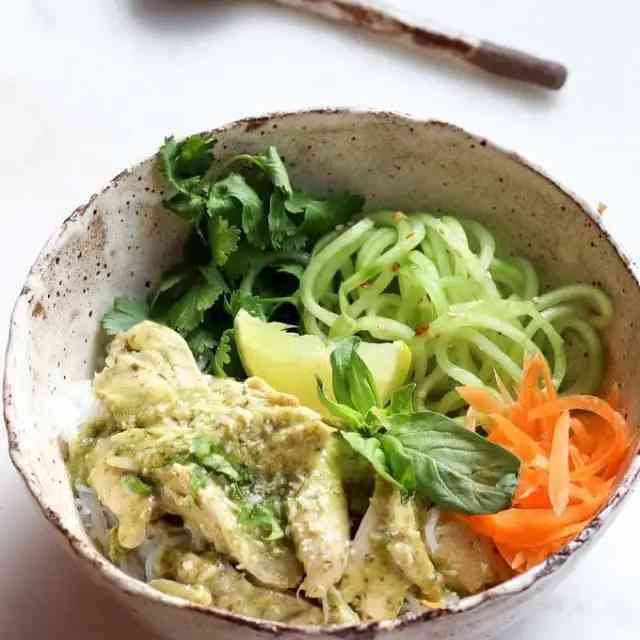
Coconut Basil Chicken Shirataki Noodle Bowl 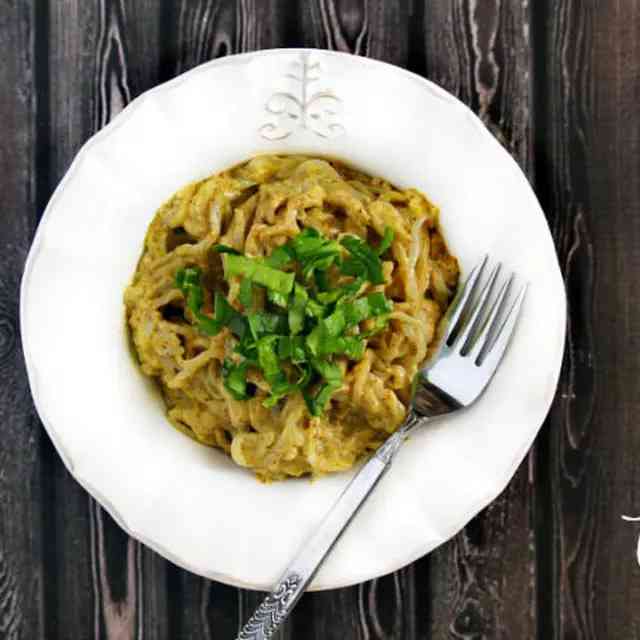
Creamy Chipotle Avocado Sauce Shirataki Pasta 
Creamy Shrimp Shirataki Alfredo 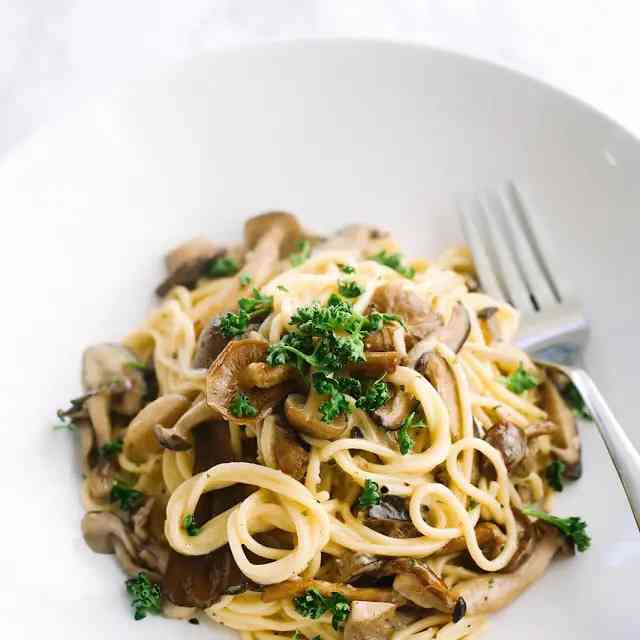
Shirataki Mushroom Pasta 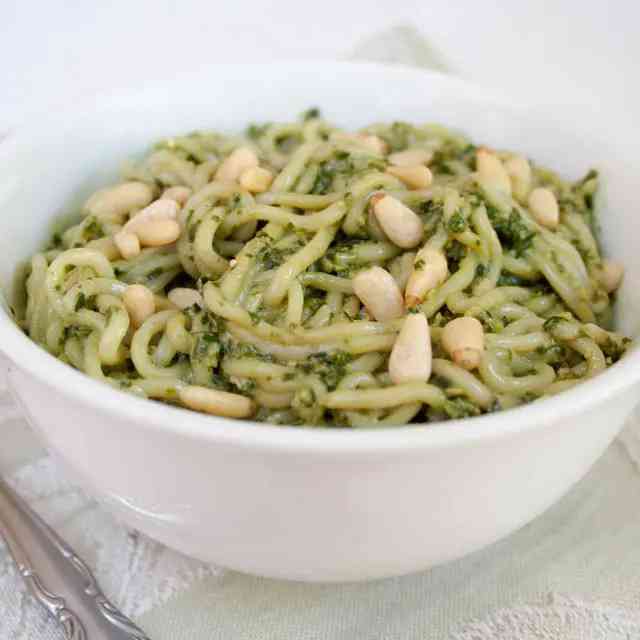
Shirataki Vegan Pesto 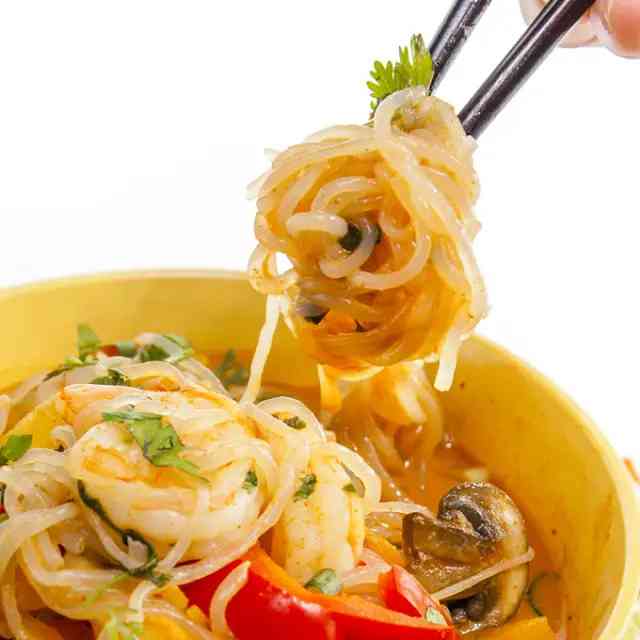
Shrimp Curry Shirataki Noodles 
Shirataki Chicken Alfredo 
Shirataki Shrimp Pad Thai
Shirataki Noodle FAQs
Shirataki noodles are keto-friendly because it contains almost no carbs and calories. It is made of 97% water and 3% glucomannan fiber. Glucomannan is a naturally-occurring ingredient from roots of elephant yam and it is linked to several health benefits such as suppressing appetite and lowering both blood sugar and insulin levels. Shirataki noodles are the perfect substitute for pasta and noodles when following a keto diet.
Shirataki noodles are made from a tuber called konjac. The starchy part, glucomannan, is extracted from the tuber then mixed with limewater and water to turn it into a mixture called konnyaku. Konyakku is then shredded to form into shirataki noodles.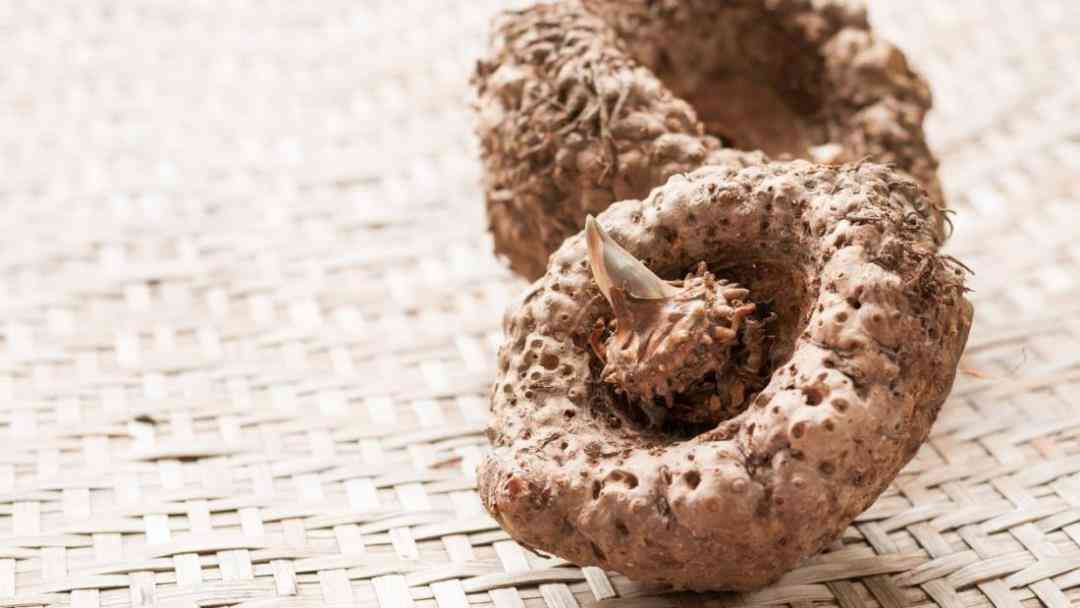
Shirataki noodles have no real flavor on its own since it is just made of mostly water and glucomannan fiber. However, some shirataki noodle brands smell like fish and that might affect the taste of the noodles. Make sure to thoroughly wash and dry the noodles as you prepare them to remove its fishy smell.
Shirataki noodles are gluten-free since it is just made of water and glucomannan fiber. They don’t contain wheat, rye, barley, or rice.
Shirataki noodles are vegan since it is just made of 97% water and 3% glucomannan fiber from the roots of the konjac plant.
It depends on the shirataki noodle brand. Most brands don’t contain any carbs or calories at all. For some brands, the carbs are all coming from dietary fiber which is not usually absorbed by the body. Thus, shirataki noodles can be considered as a zero net carb food.
Most shirataki noodle brands expire within 12 months after the manufacture date.
Unopened shirataki noodles can be left at room temperature, but it is recommended to store them in the refrigerator for best results.
Shirataki noodles are sugar-free and have a glycemic index of 0. Moreover, its glucomannan content is known to reduce both the blood sugar and insulin levels in the body. Thus, shirataki noodles are good for diabetics.
Shirataki noodles are not the same as tofu although there are brands such as House Foods that has tofu in their shirataki noodles.
It is not recommended to freeze shirataki noodles since it may damage the structure of the noodles and cause its package to leak or burst.
Most people find shirataki noodles to have a fishy-smelling liquid once they open the package. Actually, the liquid is just plain water that has absorbed the odor of the konjac plant. Thus, it’s crucial to rinse the noodles very well for a few minutes under running water to remove most of the odor.
Don’t forget to share this Shirataki Keto Guide with your friends!
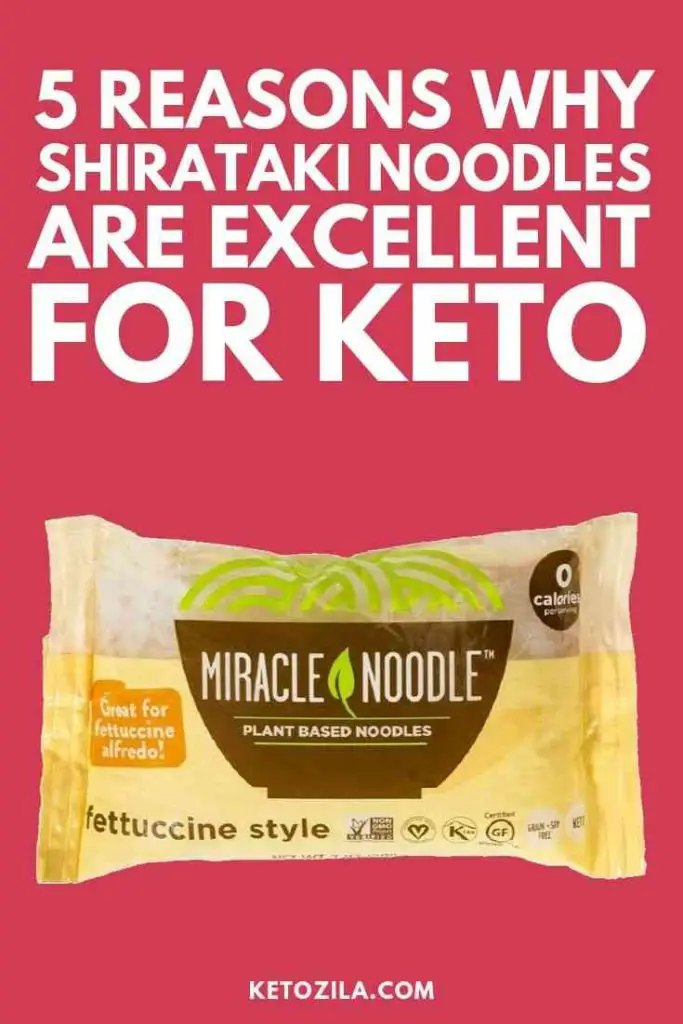
References
- https://www.ncbi.nlm.nih.gov/pubmed/18041436
- https://www.ncbi.nlm.nih.gov/pmc/articles/PMC3892933/
- https://www.ncbi.nlm.nih.gov/pubmed/6096282
- https://www.ncbi.nlm.nih.gov/pubmed/19108925


